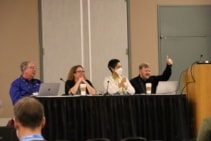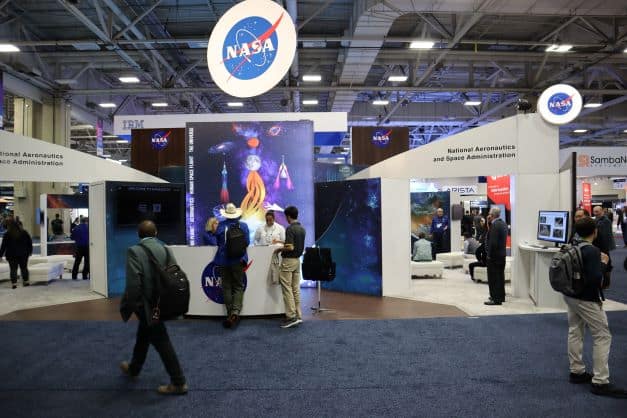Every year, the biggest names in high-performance computing get together for the SC conference. This year’s edition, SC22, saw nearly 12 000 supercomputing experts and enthusiasts travel to Dallas, Texas, US to listen to lectures, collaborate with colleagues and meet old friends.
One of this year’s “Birds of a Feather” sessions – so named because they provide a space for experts to discuss topics based on personal interests rather than disciplinary boundaries – focused on the intersection between physics-informed machine learning and high-performance computing (HPC). While high-fidelity physics simulations are vital in the study of complex systems, they’re costly in terms of computing power. There are solutions to this, such as alternative projection-based methods, but these have limited accuracy. During the discussion, supercomputing and machine learning communities brought their expertise, while users of these systems spoke about their own challenges.
A “digital twin” for Earth
Another highlight of the conference for physicists was a plenary talk by Niels Wedi of the European Centre for Medium-Range Weather Forecasts (ECMWF) on the Destination Earth (DestinE) project. This collaborative initiative from the European Commission brings together scientists from the European Space Agency, EUMETSAT and ECMWF with the aim of creating a “digital twin” of Earth – that is, a physics-based model that acts as an interactive computer simulation of our planet. The project’s first phase is due to end in June 2024, and in his talk, Wedi explained that it has several goals:
- Creating a common and standardized approach (the DestinE digital twin engine) for developing Earth-system simulations and connecting them with observations
- Developing services to help assess and predict environmental extremes using a “weather-induced and geophysical extremes” digital twin
- Establishing services to support climate change adaptation policies and mitigation scenario testing via a “climate change adaptation” digital twin
Wedi also noted that most of the world’s computing resources are currently located in Europe, the US and China. Creating an effective digital twin of our entire planet will, he said, require expanding this capability so that people around the world can get involved.
Edge computing meets the edge of space
A final physics highlight came from Mark Fernandez, the principal investigator for the Hewlett-Packard Enterprise Spaceborne Computer Program. Fernandez was instrumental in getting both the first and second iterations of the Spaceborne supercomputer onto the International Space Station (ISS), and was part of an SC22 panel discussion on “Computing at the Edge: A Discussion about Supporting Recent US Space Missions.”

As members of the panel explained, edge computing devices allow complex computations to be performed on-site – for example, on an oil rig, a factory floor or inside a space station. Before such devices were available, this computational work often needed to be sent off-site to sections of the network that could handle the load. This created some problems, since “you can always compute faster than you transmit,” Fernandez told me in an interview after the panel.
One way that edge computing has already demonstrated its potential on the ISS is by analysing the gloves of astronauts. Whenever astronauts return to the ISS after a spacewalk, their equipment must be analysed to make sure it is still safe. The current way of doing this is to send photos of the gloves back to Earth for expert human analysis, which takes about five days. During that time, astronauts must wait to find out whether they can use their gloves again. In contrast, once the HPE Spaceborne computer completed a single (admittedly time-consuming) period of being “trained” on glove images using machine learning, it succeeded in analysing astronaut gloves in mere seconds.

Cutting the carbon footprint of supercomputing in scientific research
For the moment, the human system for checking astronaut gloves is still in place. However, Fernandez hopes that the computerized alternative will one day allow astronauts to go outside and work multiple days in a row. As with efforts to model tiny particles in Earth’s atmosphere, when it comes to space exploration, computer science and physics fit together like – well, like a hand in a glove.
